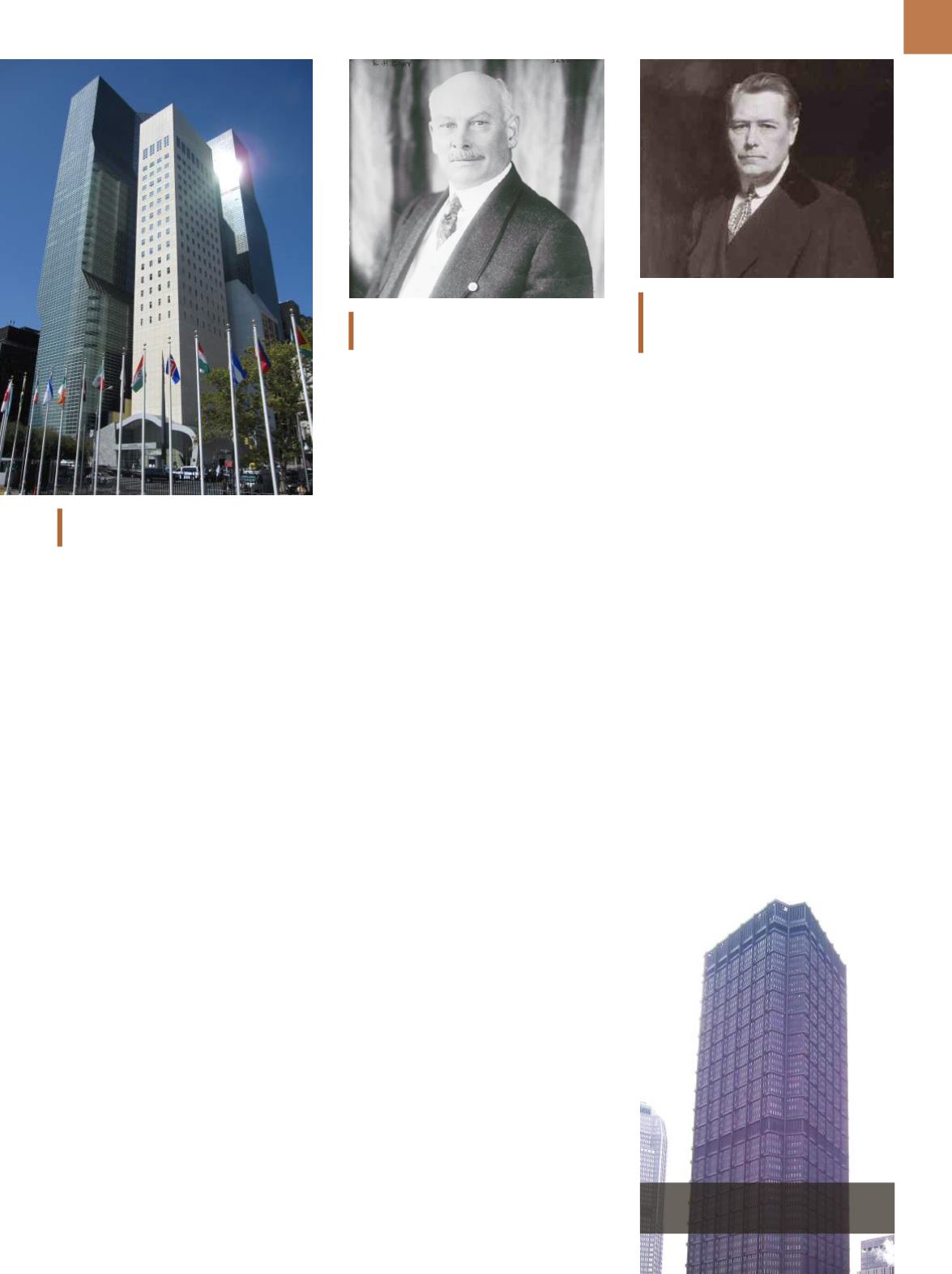

A D V A N C E D
M A T E R I A L S
&
P R O C E S S E S |
A P R I L
2 0 1 6
3 5
Judge Elbert Henry Gary, the first chair-
man of USS. Circa 1915.
WARTIME EFFORTS
By 1940, the defense effort in-
creased to rebuild the U.S. armed forc-
es, in addition to helping England and
France through the lend-lease program.
During the five years leading up to Ja-
pan’s surrender, the U.S. produced
$190 billion in armament with a third
of all steel made by USS. For example, a
USS mill in Lorain, Ohio, produced over
1200 miles of 24-inch-diameter pipe
for the big pipeline carrying oil from
Texas to New Jersey. The Corporation
built a new government funded steel
mill at Geneva, Utah, to supply steel for
the West Coast shipbuilding industry.
Throughout the war, the USS American
Bridge Division erected several govern-
ment funded factories and buildings.
The post war era saw the cancella-
tion of nearly all government contracts
with severe unemployment. With the
conversion back to consumer goods
and the introduction of new technol-
ogies developed during the war, the
economy soon revived with demand
for steel exceeding wartime levels. The
1950s was the most prosperous decade
since the 1920s beginning with the Ko-
rean conflict, which again increased de-
mand for armament. This resulted in the
Cold War and the continued need for a
strong defense industry. New technolo-
gies such as the nuclear powered navy
and the beginning of the nuclear power
energy industry increased demand for
steel. The auto industry was building
more and heavier cars and applianc-
es became household necessities. In
addition—for the first time since con-
struction of the Empire State Building
in 1931—a new high-rise was erected,
the United Nations headquarters in New
York. The 1950s would see the beginning
of a boom in such buildings, and the
Federal-AidHighway Act of 1956 (tobuild
the interstate highway system) added to
the steel demand as well.
STEEL INDUSTRY BOOMS
With the increasing use of steel,
USS started a program of modernizing
its older mills and adding equipment
for new products. The most ambitious
project was a new steel works at a ru-
ral site on the Delaware River in Penn-
sylvania at the New Jersey border. This
works required all the infrastructure
of rail lines, a harbor for unloading ore
ships, blast furnaces, open hearth fur-
naces, coke ovens, and rolling mills for
various products. The iron ore for this
mill would be imported from a deposit
owned by USS in Venezuela. This plant
was the largest ever built in the United
States on a new site. Also, a new town
was built several miles away to house
workers and all the related services. The
plant was named The Fairless Works
and the town named Fairless Hills after
the new chairman, Benjamin Fairless.
The Corporation built a new
headquarters in Pittsburgh in 1953—a
41-story building using steel and stone.
In 1956, they built a new research and
development campus at Monroeville
near Pittsburgh. USS had first estab-
lished a central research laboratory in
1928 at Kearny, N.J., in an unused build-
ing in the Federal Shipbuilding and Dry-
dock Co., a division of the company.
One of the first research employees was
Edgar Bain who would become world
famous for his studies on the transfor-
mation of austenite to pearlite at con-
stant subcritical temperatures. A funda-
mental research laboratory on the new
campus was named in his honor.
The 1950s would end with the
understanding that there was a great
future for steel and it would be led by
The Corporation. However, in the last
months of 1959, negotiations between
the major integrated steel industry and
the United Steel Workers Union ended
with a four-month strike that even-
tually changed the industry beyond
recognition.
For more information:
Charles R.
Simcoe can be reached at
crsimcoe1@ gmail.com.
Myron Charles Taylor, the second
chairman of USS who led the company
through the Great Depression.
United Nations Headquarters, the first
high-rise built after the Great Depression.
Headquarters of The Corporation,
erected in Pittsburgh, 1953.


















